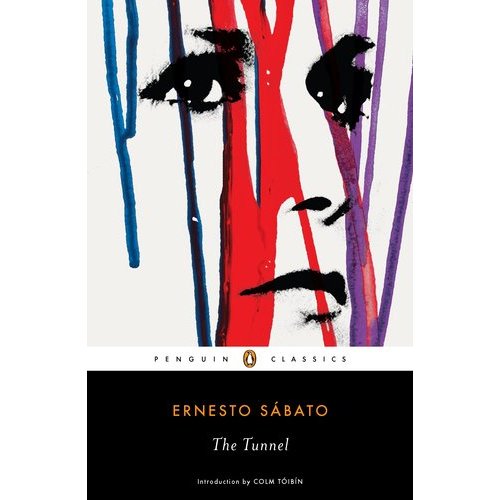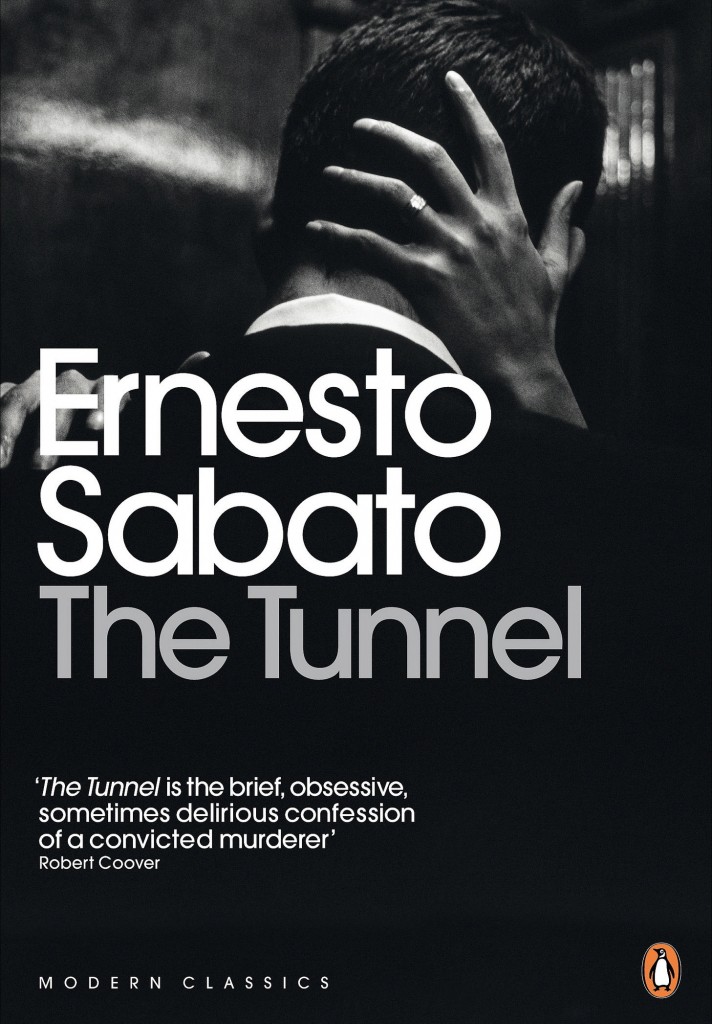.

.
In this, his first novel, Ernesto Sábato displays an assured hand in fashioning a fresh tale of obsession and murder. The pace of THE TUNNEL is uncommonly well controlled. There is no fat on the bones of its first-person confessional narrative. At 140 pages, divided into 39 chapters, the book can be read in one or two sessions. This I recommend. Uninterrupted attention to the diseased mind of the artist-confessor, Juan Pablo Castel, is the optimal way to experience Sabato’s own artistry.
We know from the opening pages of the novel and from the first encounter between Castel and María Iribarne that these two lovers are doomed to play out a fatal destiny. We expect the descent will be devastating. It is.
The affair begins with the traditional dance: tentative connections, daydreaming, high expectations, misunderstandings, jousting, furtive telephone calls. Looking back after his crime, Castel recalls “how we are blinded by love, how magically love transforms reality.”
It is chilling to come upon the first intimations of violence. Sábato is a master of the slow reveal. He is aware of how we, his apprehensive readers, are taking in and digesting the progress of the tale. I was struck by the teasing manner in which he parcels out dialog between the lovers, and how he uses their diverging temperaments (the overly-analytical Castel versus the elusive María) as a means to keep us off-balance. We want to hear more from María, in her own words, unfiltered by the claustrophobic, maddeningly selfish perceptions of the narrator. When she finally speaks honestly to him of her desires, during an escape from the city to an estancia by the ocean (“I can’t count the times,” she tells Castel, “that I have dreamed of sharing this sea and this sky with you”) — the emotional effect is powerful.
When first published in 1948, and championed by Albert Camus, THE TUNNEL was placed on the shelf with contemporary existentialist literature. It is true Sábato bows in that direction, as when Castel waxes philosophical:
“There are times I feel nothing has meaning. On a tiny planet that has been racing toward oblivion for millions of years, we are born amid sorrow; we grow, we struggle, we grow ill, we suffer, we make others suffer, we cry out, we die, or others die, and new beings are born to begin the senseless comedy all over again.”
But to the 21st-century reader chances are this will sound like window-dressing. Nowadays the philosophical takes a back seat to the psychological, which means THE TUNNEL becomes a case study. It is an examination — or, since the story is in the form of a confession, let us say a self-examination — by a man suffering through deep psychological trauma. Castel boasts: “My brain is in constant ferment and, when I get nervous, ideas roil in a giddy ballet.” Although he fancies himself a superior analytical being, we know better. Obsessive, vengeful, violently jealous, here is a man depressed, suicidal. His descent is plotted with steady skill by the author.
Notes: The paperback edition I read, no longer in print, is covered with the striking a black and white photo (below). Penguin Classics is issuing a reprint edition in April, 2012, with an inferior cover (above) that does little to evoke the novel’s mood. A film version of The Tunnel was released in 1988 to mixed reviews; Peter Weller plays the role of Castel, and Jane Seymour is María.
.

.






